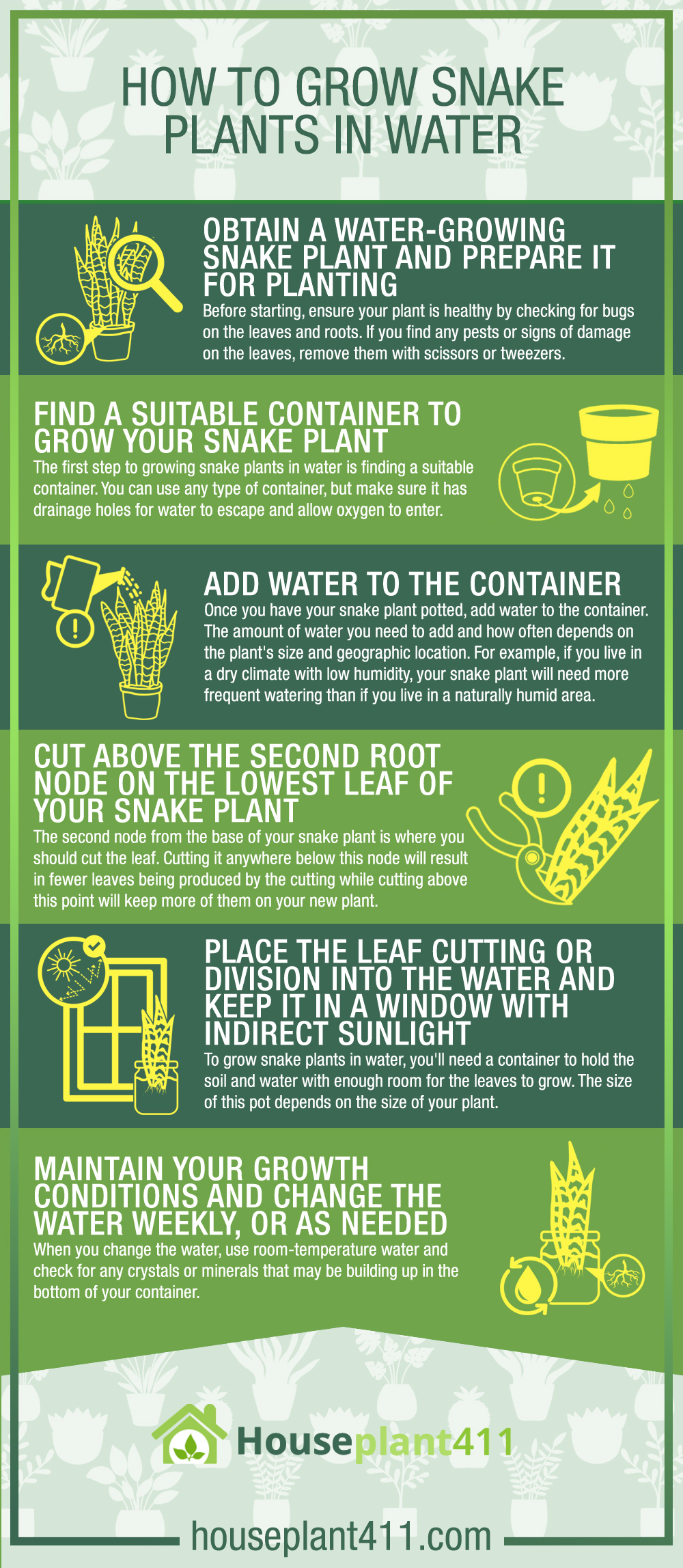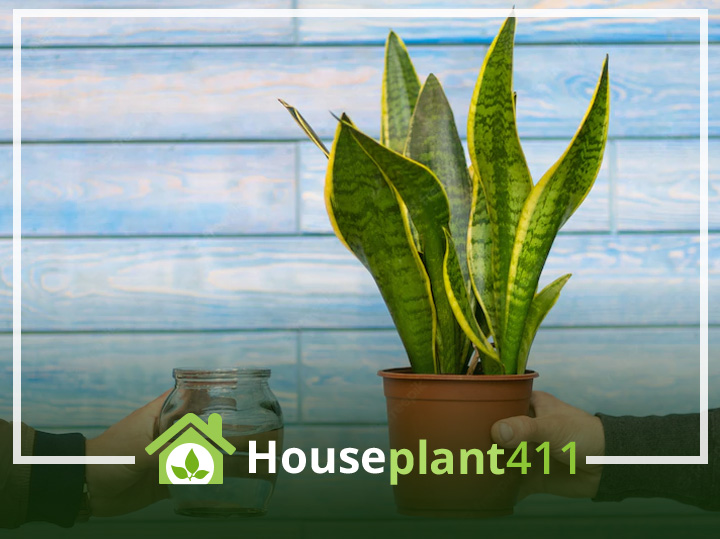Snake plants are beautiful and versatile plants that can be grown indoors or out. They’re also fairly easy to care for, making them an excellent choice for beginning gardeners. However, there’s one thing snake plants aren’t known for: their ability to grow in water.
Read on to find out how you can go from not being able to grow a single snake plant (or any other plant) in water to having multiple varieties of these stunning succulents floating around your home—all without soil.
Snake plants are easy to grow in water. They can be grown at home, indoors or outdoors. They can even be grown year-round!
Here’s how:
Obtain a Water-Growing Snake Plant and Prepare It for Planting.
Once you have your water-growing snake plant and know how to take care of it, you can begin planting it in its new medium.
Before starting, ensure your plant is healthy by checking for bugs on the leaves and roots. If you find any pests or signs of damage on the leaves, remove them with scissors or tweezers. Check that there are no dead leaves at all; if there are more than three dead leaves per branch coming off a stem, then it’s best to discard this part of the plant. Also, check for signs of root rot (damp soil), insect eggs or worms in holes made by grubs or beetles (white or brownish spots). The roots should appear firm without being too hard nor overly soft; they should also be slightly darker than those found in other plants growing nearby due to their exposure to sunlight through windows during daylight hours
Find A Suitable Container to Grow Your Snake Plant.
The first step to growing snake plants in water is finding a suitable container. You can use any type of container, but make sure it has drainage holes for water to escape and allow oxygen to enter. Some options include:
- A clear plastic container with holes punched in the bottom
- A glass or terrarium (with holes punched in the bottom)
- A fish tank or other large aquarium with a lid that can be opened and closed easily (with holes punched in the bottom)
Add Water to The Container.
Once you have your snake plant potted, add water to the container. The amount of water you need to add and how often depends on the plant’s size and geographic location. For example, if you live in a dry climate with low humidity, your snake plant will need more frequent watering than if you live in a naturally humid area.
It’s also important to know how much water is enough for each situation so that you don’t overwater or underwater your snake plants. The general rule of thumb is that when the soil feels dry 1 inch down from surface—about every 2-4 weeks depending on light exposure—it needs more water. Here are some tips for checking soil moisture:
Cut Above the Second Root Node on The Lowest Leaf of Your Snake Plant.
The second node from the base of your snake plant is where you should cut the leaf. Cutting it anywhere below this node will result in fewer leaves being produced by the cutting while cutting above this point will keep more of them on your new plant.
The best way to figure out where that second node is exactly? Use your eyes! You’ll know you’ve found it when there’s an obvious bump where two leaf veins meet up with each other or if you see some sort of bulge or bud sticking out at all (like in our picture).
Place The Leaf Cutting or Division into The Water and Keep It In A Window With Indirect Sunlight.
To grow snake plants in water, you’ll need a container to hold the soil and water with enough room for the leaves to grow. The size of this pot depends on the size of your plant. If you’ve purchased a small plant, go with a 2-inch pot; if it’s large, try a 6-inch pot.
Once your planter is ready to go, fill it with soil and make sure that there is at least 1/3 of its height (or radius) covered in water. Place one or two pieces of cork bark over the top lip so that when you place your leaf cutting or division into the water and keep it in a window with indirect sunlight.
Maintain Your Growth Conditions and Change the Water Weekly, Or as Needed.
When you change the water, use room-temperature water and check for any crystals or minerals that may be building up in the bottom of your container. It’s also a good idea to check for any roots growing in with your snake plant—if you see any, gently pull them out with your fingers or pruning shears. (Make sure you don’t cut off too much of the plant.)
The snake plant should always be slightly damp; if it gets too dry, it will stop growing and eventually die. If this happens, try watering more frequently until they start going back into growth mode again. Keep in mind that although they’re native to tropical areas such as South Africa where they can get plenty of direct sunlight all year round, indoor plants need less sunlight than outdoor ones do because heat rises, and most indoor spaces don’t receive direct sunlight very often (if at all).

Conclusion
By following these steps, you can grow a healthy snake plant that requires little maintenance. This is a great option for those looking to save time and space while still enjoying their favorite indoor plant.

